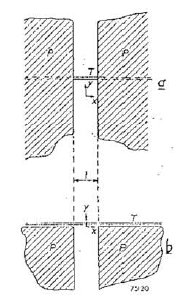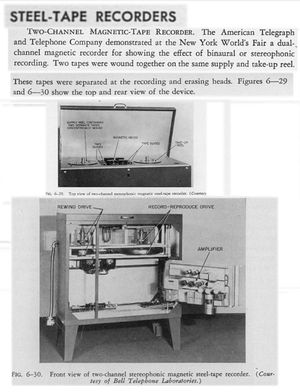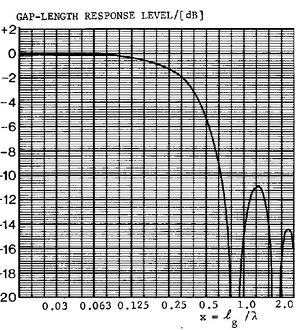Some Popular Misconceptions About Magnetic Recording History and Theory
Introduction
This article is based off an article initially written by Jay McKnight, Magnetic Reference Laboratory, San Jose, CA and Jeffrey McKnight, Creativity Inc., San Carlos, CA, the original version can be found here.
Magnetic recording was first proposed by Oberlin Smith in 1878, but the first working recorder was not built until 1898, by Poulsen.[1][2] The early magnetic recorders all used a steel wire or tape, but these were “non-starters” – too clumsy, not easily spliceable, too heavy, and too expensive. In those days there were no electronic amplifiers, and the distortion was much too high, so magnetic recording was not an instant success.
Electronic amplifiers were introduced in 1909, but the other problems remained.
Coated paper tape was created by the Austrian inventor Fritz Pfleumer around 1928,[1] and developed by the German chemical company BASF into a coated plastic tape. AEG (German General Electric) developed the recorder starting in 1932 – it was eventually called the “Magnetophon”. Despite this, much of the magnetic recorder development and production continued to use steel wires and tapes even up to around 1946.
During the history of magnetic recording, there were a number of important cases where the technical papers and books published histories or technical information that seemed reasonable at the time, but that later proved to be incorrect. This old incorrect information is the basis of many of the popular misconceptions about magnetic recording that still come up every now and then. The purpose of this paper to correct those errors.
Note to readers: Most of the cited references are available free online – see the References at the end of this paper.
Popular Misconception Nr 1: “AC Bias Was First Discovered in 1941 By Weber, of The German Radio Service
Magnetic recording as originally implemented by Poulsen had very high distortion. The means to eliminate almost all of the distortion is ac bias.
The German radio service RRG started using the Magnetophon in 1938, and in 1940 April, the German Radio engineer Walter Weber[3] discovered ac biasing when an amplifier accidentally broke into oscillation. Weber’s discovery changed the rather low quality magnetic recorder into a high quality recorder, and thus began the first practical large usage of tape recording in the German radio service. For this, Weber deserves much credit. But he was not the first discoverer of ac bias.
AC bias was first discovered by Carlson and Carpenter, as part of their work for the US Navy in recording radio telegraph signals. They applied for a US patent in 1921, and it was granted in 1927.[4] But there was no internet and no Google in that day, and no one working in magnetic sound recording found out about ac bias for another 20 years. Many people are still not aware of Carlson and Carpenter’s 1921 invention, and they believe incorrectly that Weber was actually the first discoverer of ac bias.
There are also several other “discoverers” of ac bias around the same time in the late 1930s. They are listed in a paper by Engel[3] – the Japanese Igarashi, Ishikawa and Nagai were awarded a patent in 1938, and Marvin Camras in the US also invented the concept of HF biasing, this time in late 1941. There is even another discoverer, only recently found – Dean Wooldridge, at Bell Telephone Labs (BTL), around 1938, but BTL didn’t reveal it until 1946, and even then it was in a very obscure footnote to a technical paper.[5] BTL was still using steel tape, and they showed their stereo steel magnetic tape recorder with ac bias at the 1939 New York World’s Fair. There’s a photo of it in Begun’s book,[6] reproduced in,[4] and shown here in Fig. 1. But Begun makes no mention of the fact that this tape recorder uses ac bias!
Popular Misconception Nr 2: “we Understand How AC-bias Works”
AC-bias seems magical – it converts magnetism, which is basically a “binary” (two-state) storage mechanism, into an “analog” storage mechanism, by simply adding a large-amplitude high-frequency signal to the signal to be recorded. How could that be? There have been many attempts to explain the action of ac bias with graphs, mathematical formulas, and “Preisach diagrams” – there are 20 pages of explanations in Camras’ book!,[7] but most of them seem more like smoke-and-mirrors than physics.
The Bell Tel Labs physicist Dean Wooldridge, in his 1976 oral interview,[8] says of ac bias “The physics involved there is just a little more abstruse than you might imagine.” This is surely the understatement of the century.
There is one physical explanation by Neal Bertram (then with Ampex) in 1971 using a “Monte Carlo” statistical calculation,[9] but the format of the original journal required shortening the text to only two pages, which prevented giving much of the descriptive explanatory text and the original computer program to do the Monte Carlo calculation, leaving the original paper incomprehensible to most audio engineers.
Jeff McKnight has been working with Neal, and will now describe that model, and show a modern computer program and its result. The written version of this presentation is still in preparation, and should be completed in early 2013.
Popular Misconception Nr 3: The High Frequency (Actually Short Wavelength) Loss in Magnetic Recording is Caused By The “Gap Loss” in the Reproducing Head
By way of introduction: In sound recording, we start with a “sound”, which is a sound pressure that varies with time, at a given number of cycles per second, called the “frequency”, with the unit hertz, unit symbol [Hz]. In order to record a sound, we first convert it into an electrical signal that varies with time, still measured in hertz.
That signal is transmitted thru an electrical transmission system that has a “gain vs frequency response”, commonly shortened to “frequency response”. The transmission system may be an amplifier, a transformer, a magnetic recording head, etc. Each of these has a “frequency response”.
In order to record this signal on an analog moving medium such as magnetic tape, we convert the electrical signal varying in time, into a magnetic signal varying in space down the length of the tape. Thus the original frequency in hertz is converted to a wavelength in meters on the tape, according to the relationship: wavelength = tape speed divided by the recording frequency.
A magnetic tape, per se, does not have a “frequency response”, but it does have a “wavelength response” – that is, a recorded flux as a function of the wavelength.
Early reports often showed the frequency (really wavelength) response of the repro head output voltage, when recording a constant-current signal, that is, without any pre-emphasis – see for instance the curves in the 3M “SoundTalk Bulletin 01",[10] reproduced here in Fig. 2 .
Some very early papers attributed the short-wavelength fall off to “gap loss” in the reproducing head. When you look at the response curves, you could believe that – the fall-off has a shape similar to gap loss,[11] as shown below in Fig. 4. But in fact tape reproducer manufacturers always use a gap length that is short enough that the gap loss at the highest frequency and slowest tape speed is no more than a few decibels.
Popular Misconception Nr 4: “The Quantity That Describes the Recorded Signal is Surface Induction, in Gauss”
We occasionally get an inquiry asking “What do you mean ‘recorded signal flux in webers’ – isn’t the recorded signal described by ‘flux density in teslas (formerly by the cgs unit, gauss)’ ?” The answer is that the early standards committee work (1949 +) of SMPTE, IEC, CCIR, and the British Standards Institute did use the quantity “flux density”. It was apparently chosen because it has the same curve shape as the output voltage of an inductive reproducing head (Fig. 2). The published magnetic recording books and the tape recording standards of that day also used “flux density”. But that has long since been changed, and all of these books and standards now use flux in webers.
The detailed arguments for using flux are given in the Appendix of Ref 12.[12] That Appendix refers to a 1953 paper by J. D. Bick, “Methods of measuring surface induction of magnetic tape”. We just recently became aware that the Journal published a correction in 1954,[13] saying that “The article would be correct if the words ‘surface flux’ were inserted everywhere ‘surface induction’ appears.” It also says that the NARTB standards of 1953 June and the CCIR standards of 1953 Oct contain the same error “which will be corrected”, but I don’t think that those Standards were corrected until the next edition was published.
Popular Misconception Nr 5: The Gaploss Formula Is (sin X)/x, But The Measured Gaploss Gives More Loss Than Predicted

When broadcasters started using tape recorders (around 1949), they studied the theory, and found that the measured gaploss was greater than the amount calculated from (sin x)/x, and they hypothesized an “effective gaplength” to explain the difference. Soon (1952) Westmijze,[14] at Philips, published his thesis on many aspects of magnetic recording and reproducing theory, including a mathematical study of the gaploss. He shows three models of the head gap, the “infinite”, the “thin”, and the “semi-infinite” (see Fig. 3). For the hypothetical “infinite” gap head the tape runs thru the middle of the gap, and (sin x)/x is in fact the correct response formula. But practical heads are of the “semi-infinite” type, and the formula is much more complicated. The practical effect is very close to that of making the gap-length 14 % longer than the physical gap, as shown in Fig. 4. Another way of puttitng it is this: if you measure the wavelength for the gap null, and put that value into (sin x)/x, you get the correct gaploss response. This is what is specified in the German Standard for measuring the frequency response of the flux on tape.[15]
When we went to using Westmijze’s equations, we found that there is a typographical error in the printed equation 15a – a factor of 1/5 has been omitted from the second term of the equation as originally published. DLA Tjaden found that error for us, and we published the correction in the AES Journal.[16]
Misconception Nr 6: The Short Wavelength Loss in Magnetic Recording is Explained by the Wallace “thickness Loss”
This section was a slightly abbreviated version of a paper now available at http://www.aes.org/aeshc/pdf/mcknight_calculating-short-wavelength-response.pdf.
Popular Misconception Nr 7: Disconnecting The Erasing Head Makes A Quieter Recording
Someone once played a bulk-erased tape, then turned on the recorder’s erasing system, and noticed that the background noise increased. From this they concluded that they could reduce the background noise by disconnecting the recorder’s erasing head. What they failed to notice is that when you turn on the ac-bias in the recording head, the noise level comes up to the same amount that there was with the erasing head connected – the noise levels do not add.[17]
You should also know that so-called “blank” tapes – whether “virgin” (new from the tape manufacturer) or bulk erased – may actually be magnetized in various ways, and that this magnetization can temporarily change the recording sensitivity of the tape. If you have the erasing head disconnected, and record a 1000 Hz tone on this tape, the recorded tone level may wander up and down by a decibel or two. But if you connect the erasing head, the recorded signal will have a steady level.
Further Reading
History that weren't so: Myths and Misperceptions - Some examples of other misconceptions in electrical engineering
References
- ↑ Jump up to: 1.0 1.1 For a general history of magnetic recording, see Daniel, Mee, and Clark, “Magnetic Recording, The First 100 Years”, IEEE Press 1999.
- ↑ For reprints of many of the historical papers, see M. Camras (ed), “Magnetic Tape Recording”, Van Nostrand Reinhold Co, 1985.
- ↑ Jump up to: 3.0 3.1 Friedrich Engel, “Walter Weber's Technical Innovation at the Reichs-Rundfunk-Gesellschaft”, http://www.richardhess.com/tape/history/Engel--Walter_Weber_2006.pdf
- ↑ Jump up to: 4.0 4.1 W. L. Carlson and G. W. Carpenter, “Radio Telegraph System”, US Patent 1 640 881, issued 1927-08-30. Reprinted in Camras (note 2)
- ↑ Jay McKnight, “AC Bias at Bell Telephone Labs, 1936...1939”, http://www.aes.org/aeshc/pdf/mcknight_ac-bias-at-btl-1936-1939.pdf
- ↑ S. J. Begun, “Magnetic Recording”, Renehart Books, 1949.
- ↑ Marvin Camras, “Magnetic Recording Handbook”, Van Nostrand, 1988. See pp 45...66.
- ↑ Lillian Hoddeson (historian), interview of Dean Wooldridge on 1976 Aug 21, Niels Bohr Library & Archives, American Institute of Physics, College Park, MD USA, http://www.aip.org/history/ohilist/4981.html . For the magnetic recording parts of the interview, search on “magnetic”.
- ↑ H. N. Bertram, “Monte Carlo Calculation of Magnetic Anhysteresis”, http://home.comcast.net/~mrltapes/bertram_montecarlo-anhysteresis.pdf
- ↑ 3M Co, “Explanation of Curve Graphs”, Sound Talk Bulletin 1, 1948-10-07 http://www.aes.org/aeshc/docs/3mtape/soundtalk/soundtalkbull01.pdf
- ↑ J. G. McKnight, “Gap-length Response In Magnetic Reproducers: Calculation, Measurement,and Compensation” http://home.comcast.net/~mrltapes/mcknight_gap-length-response.pdf
- ↑ J. G. McKnight, “Flux and Flux-frequency Measurements and Standardization in Magnetic Recording”, J. SMPTE 78, pp 457...472 (1969 Jun). http://home.comcast.net/~mrltapes/mcknight_flux-and-flux-frequency-response-measurements.pdf
- ↑ Errata to J. D. Bick, "Methods of Measuring Surface Induction of Magnetic Tape, in Vol 1, Nr 1 (1953), p. 4, published in J AES Vol 2, Nr 2, p 112 (1954 Apr).
- ↑ Willem Klaas Westmijze, “Studies on Magnetic Recording”, Philips Res. Rep. Vol 8, pp 148...157, 161...183, 245...255, 255...269, 343...354, 354...366 (1953). Reprinted in note 2.
- ↑ German Standard DIN 45 520, “Method for Measuring tha Absolute Magnitude and Frequency Response of the Flux on Magnetic Tape” (in unofficial English translation), J AES Vol 46, Nr 10, p 865 (1998 Oct).
- ↑ J. G. McKnight, “Corrigendum: To the Gap Loss Formula, the Asymptotic Expansion (Eq. 15a) of Westmijze's ‘Studies on Magnetic Recording’ ”, J AES Vol 39 NR 11 p. 878, (1991-12)
- ↑ J. G. McKnight, “Erasure of Magnetic Tape”, J Audio Eng Soc, Vol 11, pp 223...223 (1963-10), see Appendix B, “Noise Levels from Erasure” http://home.comcast.net/~mrltapes/mcknight_erasure.pdf


